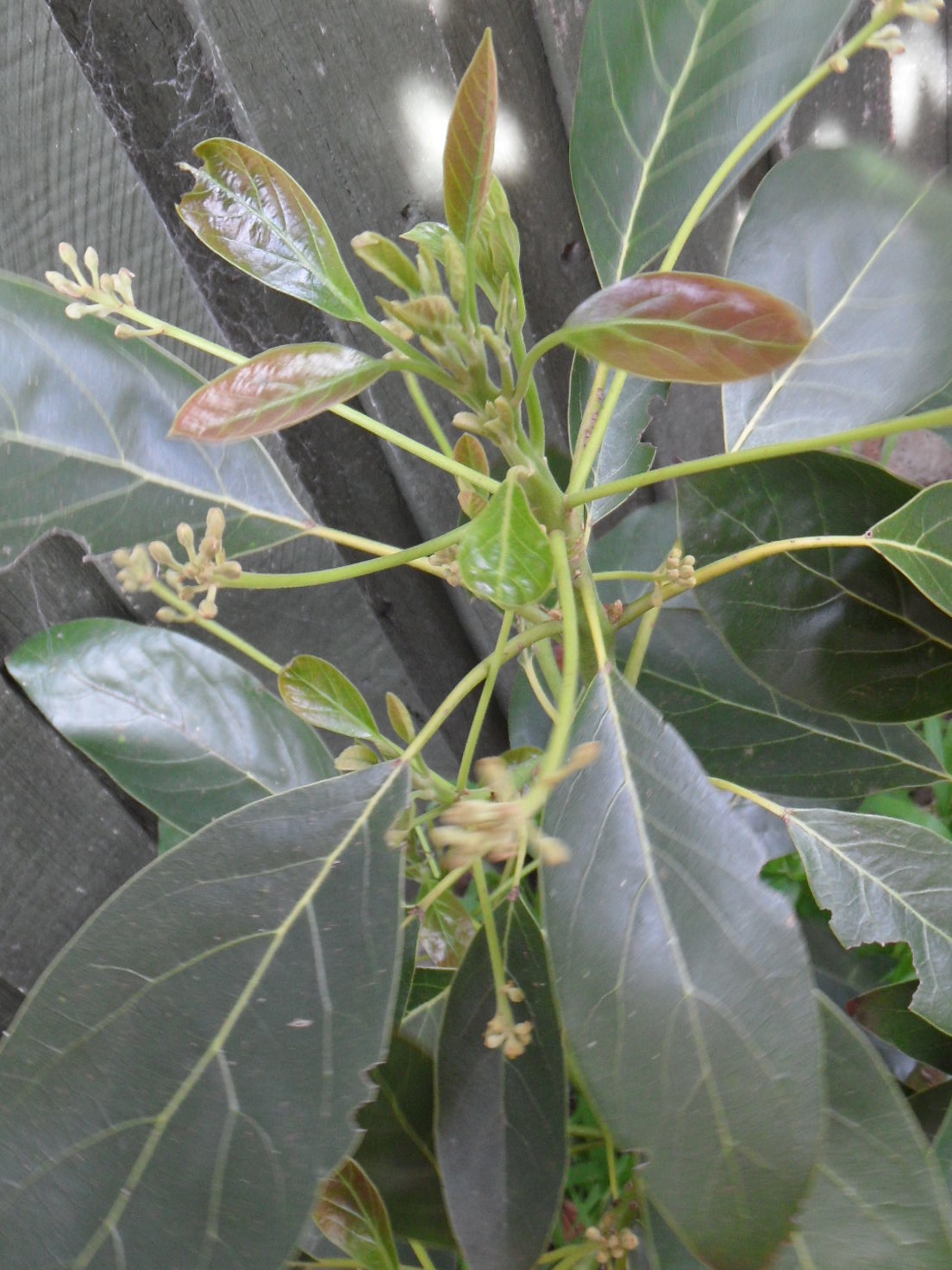
Rounded tree or shrub to 10 m tall. Leaves elliptic to ovate or oblong, mostly 8-20 cm long, dark glossy green above, bluish below. Flowers greenish, the 6 segments softly hairy; flowering period variable. Fruit pear-shaped, 8-15 cm long with glossy skin; seed large, 2-4 cm long. [p. gratissima Gaertn.]
Avocados were introduced to Australia in the late nineteenth century but not grown commercially until the 1940s; they are now widely cultivated with numerous commercial cultivars. There are 3 broad commercial groups: West Indian (which only grow in frost-free areas), Guatemalan (with thick warty skin) and Mexican (smaller with thin skins). The commercial cultivars used in Australia and New Zealand are either Guatemalan or hybrids between Guatemalan and Mexican groups, the latter having some cold resistance. The different cultivars are used partly to ensure mature fruit over several months of the year, although fruit does not ripen until picked so that the harvesting time is not crucial. Plantations have frequently been ruined by the fungus Phytophthora cinnamomi. Originally cultivated in S Qld and northern NSW, avocados are now also grown along the Murray Valley and on the Atherton Tableland in northern Queensland. The first crop may take 3-6 years. Major commercial varieties used in Australia are 'Fuerte' (a leading world cultivar), 'Hass', 'Sharwil', 'Reed' and 'Bacon' (less frequently grown are 'Anaheim', 'Nabal', 'Rincon', 'Ryan', 'Wurz' and 'Zutano'). Growth is limited by frost but plants develop to fruit, for example, in the bayside suburbs of Melbourne, at Lakes Entrance and around Adelaide. Apart from ‘Fuerte’ grown in cooler climates, it is recommended that two varieties are planted together to ensure fertilization although the flowers are bisexual and limited fruit set is generally achieved with single plants.
C America
Cultivated since 8000BC for the buttery fruit flesh, rich in oils and vitamins A, B and E; used as a salad vegetable, spread, dip, entrée etc.
Large leaves, waxy blue below, similar to those of Magnolia doltsopa (syn. Michelia doltsopa) but the stalks without swellings or stipular scars.
Source: (1997). Lauraceae. In: . Horticultural Flora of South-eastern Australia. Volume 2. Flowering plants. Dicotyledons. Part 1. The identification of garden and cultivated plants. University of New South Wales Press.
